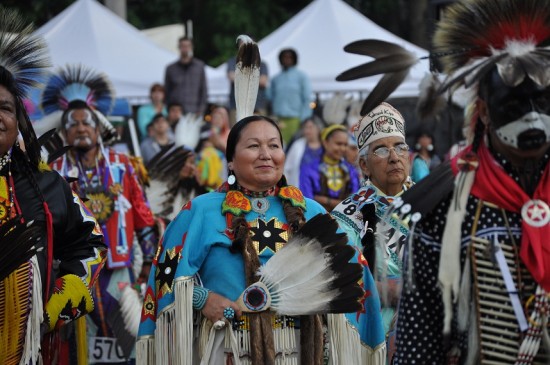
But a couple of Econsultancy papers I came across recently shook my long-held views about “tribalism” in the digital space. Their author, Econsultancy Digital Vision grant-winner Allison Aldridge-Saur, deconstructs the notion “digital tribes”, taking it back to its most authentic form – the Native American tribal culture of the Chickasaw Indians.
Key Takeaways from Digital Tribes: Redefining Community Through American Tribal Practice
Exploring the community strengthening practices that exist in a traditional Native American tribe, Aldridge-Saur identifies techniques that digital marketers and community managers can deploy to build strong online tribes.
It is a fascinating piece of research and I recommend reading it in full (there is a third part coming up on the Econsultancy website). Below are its most noteworthy points…
1. There are three pillars to tribalism – naming, culture and organisation. Marketers should consider leveraging each of the communal approaches that lie within these pillars when building an online community. The author argues that the research “points to the possibility of long term, fierce commitment and pride-filled identification” as seen in groups like Harley Davidson bikers, Trekkies and fans of the band Grateful Dead.
2. People’s communal identity is defined, above all things, by language – common names, symbols such as # and @, industry jargon, and fictional languages that tie people to each other and provide a strong sense of belonging. It is therefore possible to tap into the identity of a community through the creation of specific terms, phrases, names and symbols.
3. Naming (a group, a person or an event) is very important and you only have one go at it – once the name has acquired identity, you can’t change it. A name’s “birth” (it should happen naturally, so don’t force it!) should ideally be accompanied by a ritual of sorts. “Once you have a name, declare it, celebrate it, and do it regularly,” writes the author of the study. A community with an exclusive name can result in strong affiliation, pride and dedication on the part of its members.
4. Are you building an audience or a community? You should be clear about your objectives from the outset since, according to the author, there is a thick line to be drawn between the two concepts. While the popular rhetoric of content, engagement and thought leadership may be valuable for building an audience, the author points out that these tactics do not have the same value for creating a community, which is self-sustainable and supported from within, without the need for quality and relevance. “Individuals in a community stick together and support both the group and one another because of a shared identity, a shared culture,” writes Aldridge-Saur.
5. If you already have an audience and you wish to step up to the next level, you need to create and nurture a culture whose values members can internalise and identify with. This includes the need to initiate, encourage and share brand stories (such as origination narratives), articulate, repeat and celebrate the values of the group, act according to them, and create a caring, nurturing environment.
Viewing online groups through the prism of tribalism may seem invalid, especially in an age when relevance, personalisation and you-centricity dominate the digital marketing discourse.
But the distinction between online audiences and digital communities, and the focus on culture and shared values, backed by authentic tribal references, make this study a highly valuable resource and a must-read for anyone involved in social media marketing.
Image credit: Joe Mabel, Wikimedia Commons